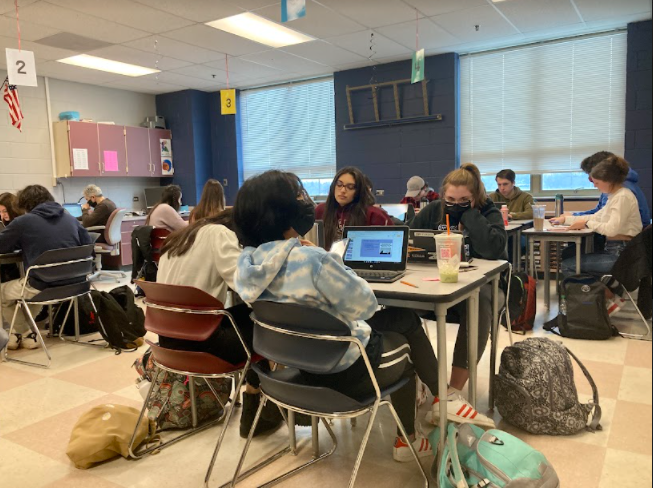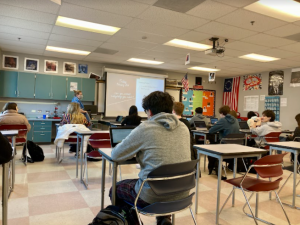Year-Round Schooling: Stick With the Current Calendar
Upperclassmen like those in this classroom could be negatively impacted by a switch to year round schooling.
February 18, 2022
Although year-round schooling is becoming more popular, it’s important to note the downsides of it too. Do we really want to take the risk of year-round schooling if it means more struggle for students and changing the lives of many families?
Year-round schooling can make school a lot more difficult for students. It’s not uncommon for students to struggle with concentration while in school, and the process of going to school all year long with frequent breaks can make staying involved with school more difficult. Summer break is beneficial to both students and teachers and can help avoid disruptions throughout the school year.
Year-round schooling would mean less room in a student’s schedule for extracurricular activities. Teenagers in the United States often need to work to support themselves or family, and if they have the schedule of year-round schooling that can make it difficult. If a child is 14-15 and in school, they are limited to a maximum of a combined eight hours of school and work due to the local youth employment laws. If I had to go to school all year, working a job for even just three hours a day would be a lot more difficult than having a summer job. Furthermore, if a teen is not in school, that opens up the opportunity for them to work up to 40 hours a week, which is necessary for students saving up for college and life after high school.
For many schools, being open all year long is expensive. Air conditioning during the summer just adds to the costs of keeping a building open year long. Additionally, summer breaks are beneficial towards teachers and board members because it gives them time to plan out maintenance projects needed for the schools.
Teachers can’t get a second job while year-round schooling is in place. It’s common for teachers to get a second job during summer to make sure that they’re getting enough income. With a year-round schooling schedule, teachers lose the opportunity to get another job, thus preventing them from making ends meet. A teacher’s national average starting salary is below the median income level at $38,000, and in some places like Montana, it’s less than that.
Last but not least, there is not enough evidence to prove that year-round schooling improves the quality of students’ work and learning outcomes. Most American schools don’t have year-round schooling, meaning that there aren’t enough schools that we can pull evidence from to see whether or not year-round schooling helps students socially and academically.
Because of all the downsides, it’s not worth it to consider year-round schooling to become an alternative or more popular option in schools. The benefits may make sense, but in the long run they aren’t worth it.




